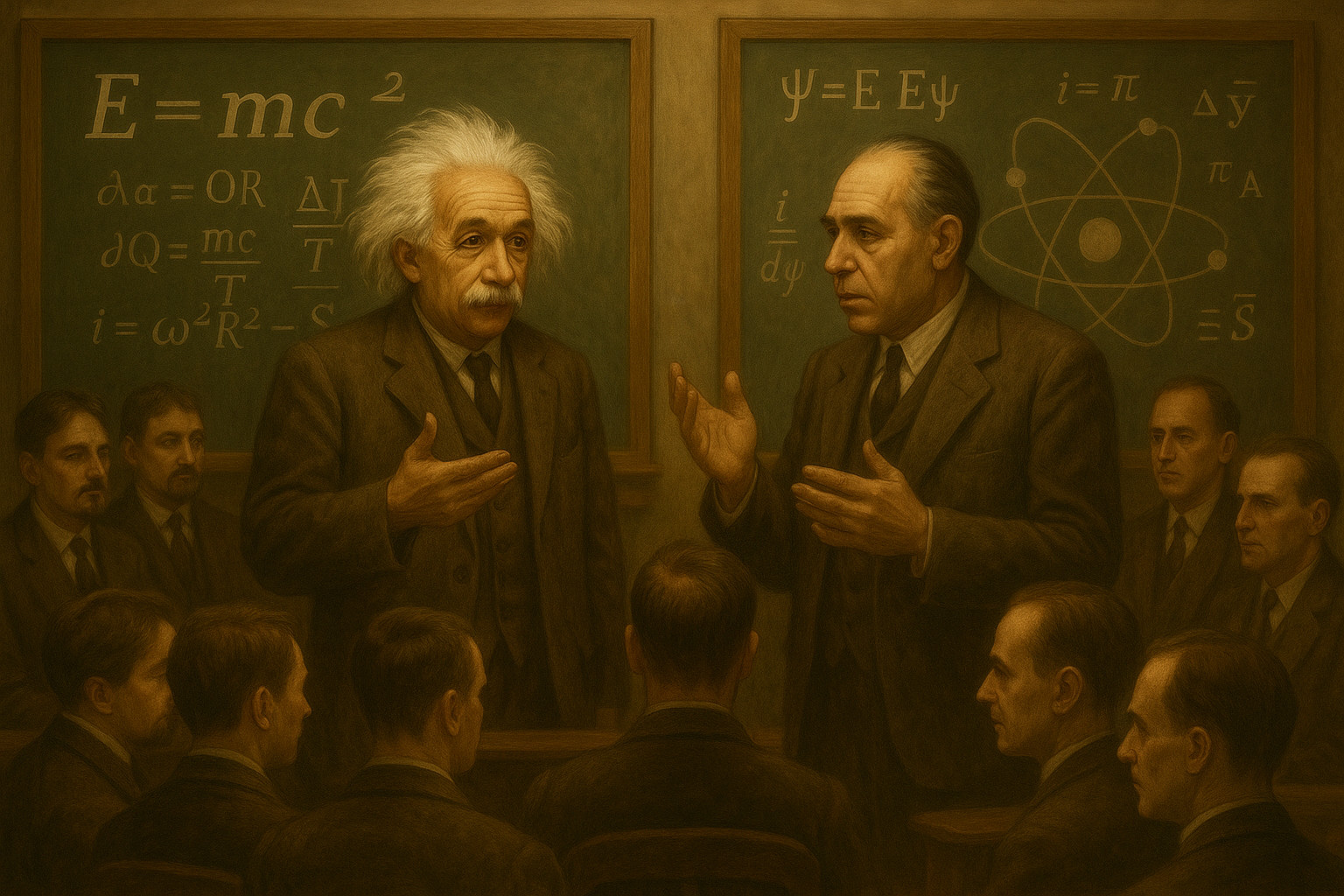
Origin: A New Dawn in Physics
In the early 20th century, the scientific community was buzzing with theories. But it was in 1905, often called the Annus Mirabilis or ‘miracle year,’ when Albert Einstein published his paper on special relativity, that the world of physics was truly revolutionized. Before this, the Newtonian view of absolute time and space reigned supreme, seen as irrefutable truths beneath the stars.
- Einstein proposed that time and space were not absolute but relative and interwoven, a single fabric influenced by mass and energy.
- His ideas challenged traditional physics and introduced the notion that time could warp and bend.
Interestingly, this was not just a shift in science but also in how humanity perceived the universe. The cultural and technological advancements of the early 1900s set the stage for radical ideas. Telephones and automobiles were reshaping daily life, encouraging people to rethink what was possible. In this fertile environment, Einstein’s ideas found a receptive audience.
Key Figures: The Minds Behind the Magic
Albert Einstein, a physicist of unparalleled creativity, was not alone in his journey. His ideas, revolutionary as they were, didn’t emerge in isolation. He built on the works of giants like Galileo and Newton but also leaned on contemporaries who were pushing boundaries.
- Figures like Max Planck, who laid the groundwork for quantum theory, played crucial roles in the shifting landscape of physics.
- While Planck embraced the probabilistic nature of quantum mechanics, Einstein remained steadfastly deterministic, famously asserting, “God does not play dice with the universe.”
Yet, it was this very divergence in thought that defined the era’s scientific debates. Their differences highlighted the tension between a predictable universe and one influenced by randomness and probability, setting the stage for future breakthroughs.
Turning Point: The Clash of Ideas
As the 20th century wore on, it became increasingly clear that quantum mechanics was not a fleeting curiosity but a robust framework for understanding the atomic and subatomic realms. Did Einstein, with his deterministic leanings, overlook this burgeoning field?
- Einstein’s rejection of quantum mechanics as incomplete reveals a stubborn adherence to his principles.
- In contrast, younger physicists like Niels Bohr and Werner Heisenberg embraced the uncertainties and probabilities of quantum theory.
Of course, this didn’t mean Einstein was wrong but that he was perhaps too steeped in the certainties of classical physics to fully embrace the quantum revolution. This intellectual clash underscored a broader philosophical debate still relevant today.
Impact on the World: A Legacy Beyond Dispute
Despite these debates, Einstein’s contributions undeniably transformed our understanding of the universe. His theories paved the way for technologies that define modern life, from GPS systems to nuclear energy.
- The ripple effects of Einstein’s work are felt across various fields, inspiring generations of scientists to explore and innovate.
- Even today, the interplay of relativity and quantum mechanics continues to puzzle and thrill the scientific community.
So, while Einstein might not have embraced quantum mechanics fully, his foundational work remains a critical pillar of modern physics, influencing countless discoveries and advancements. His legacy is one of inspiration, reminding us that challenging the status quo can lead to unimaginable breakthroughs.
Reflecting on Einstein’s journey, we find a testament to the power of curiosity and the importance of questioning accepted truths. As our understanding of the universe expands, we stand on the shoulders of giants like Einstein, whose work continues to guide and challenge our perceptions.
Fuel Someone Else’s Curiosity
Do you have friends fascinated by the mysteries of the universe? Share this article with them and spark a conversation. Let’s continue exploring the unknown together!

Leave a Reply